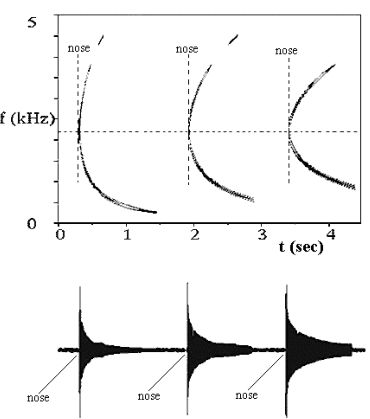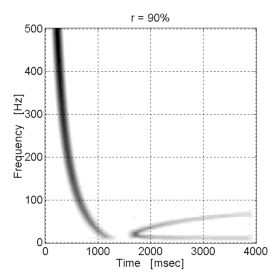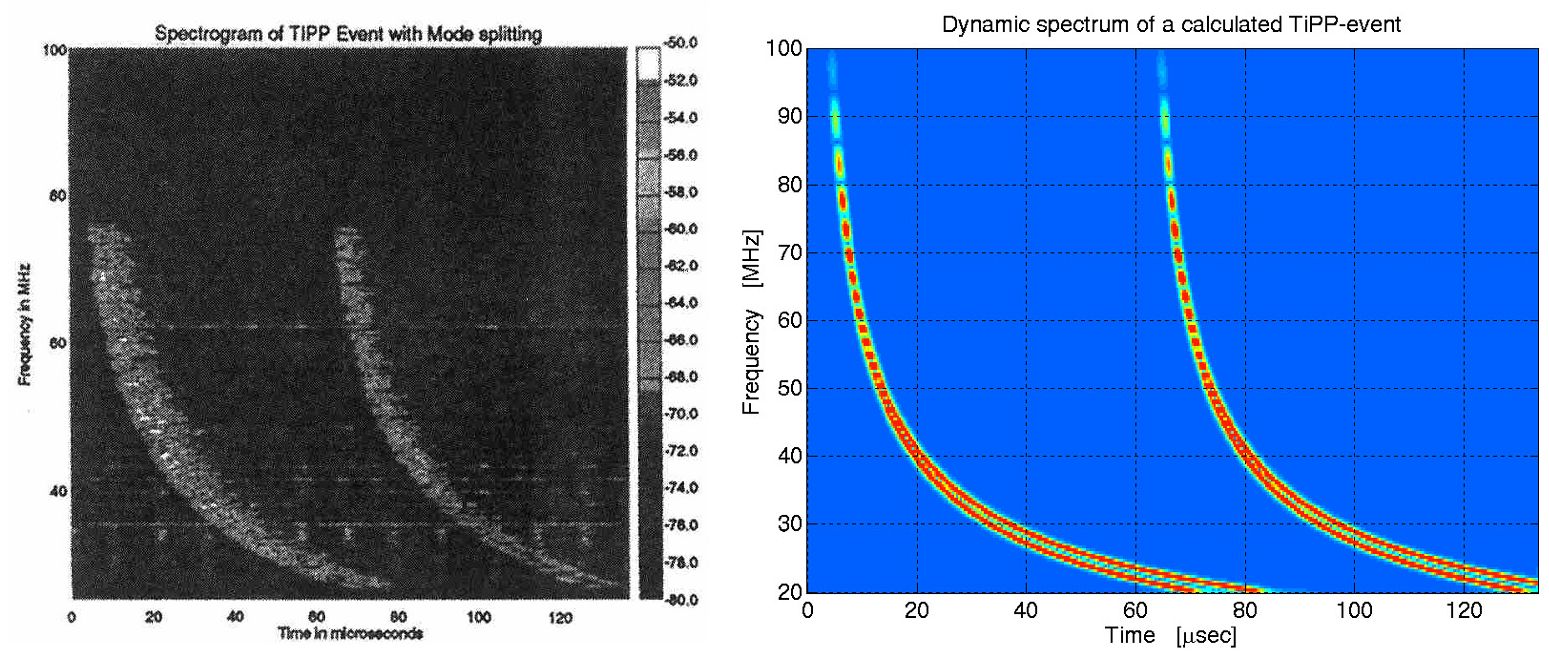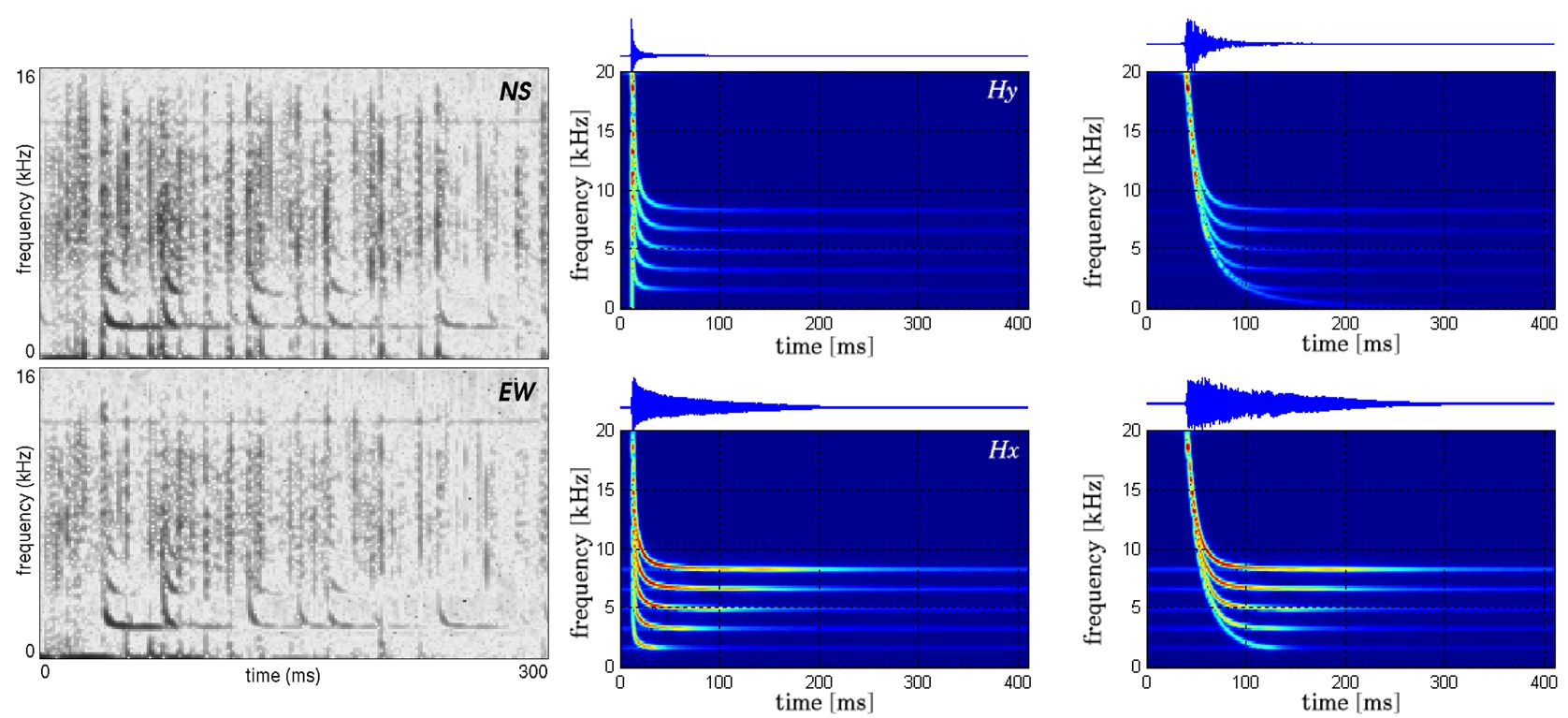- Ferencz Cs. (1978): Electromagnetic wave propagation in inhomogeneous media: Method of inhomogeneous basic modes; Acta Technica Ac. Sci. H., 86(1 2), 79.
- Ferencz Cs., Ferencz O.E., Hamar D. and Lichtenberger J. (2001): Whistler Phenomena, Short Impulse Propagation. Kluwer Academic Publisher, Netherlands, 1-260. ISBN 0-7923-6995-5
- Ferencz O. E. (2005): Full-wave solution of short impulses in inhomogeneous plasma. Pramana Journal of Physics, 64(2), 1-20. ISSN 0304-4289
- Holden D.N., Munson C.P. and Devenport J.C. (1995): Satellite observations of transionospheric pulse pairs; Geophys. Res. Lett., 22, 889.
- O.E. Ferencz et al., Ann.Geophys,25,1103,2007
Propagation of electromagnetic signals in anisotropic plasma - wave propagation models
Waveforms recorded in space physics applications, wave experiments are electromagnetic waves that propagated
in the magnetized (anisotropic) plasma medium. Another type is of waves is the oscillation of the medium itself (plasma waves).
Emissions of natural origins are mostly short duration events with either coherent signals or unstructured, noise-like
waves, due to their unknown phase. Waves describing the temporal changes of the magnetic and electric fields
are generally wide-band or ultra-wide band (UWB) wave packets, or pulses.
Fourier-analysis, widely used for the description of electromagnetic waves propagating in the plasma,
treats the signals as a composite of independent frequency components (monochromatic description).
In this picture, the wave components, according to the refractive index that depends on
the location in the medium and the frequency, propagate independently of each other,
on different paths, from the source to the sensors of the recording equipment.
In addition, the monochromatic model relies infinitely long harmonic components,
which is an unreal assumption.
Thus, the monochromatic picture has a number of theoretical limitations that can also be shown experimentally. The ELTE Space Research Group started a development of wave propagation models in the 1990's, based on field theory and attempting to give an exact solution of the waveform, to be used in the interpretation of experimental measurements. This new model makes no assumption on the original, generating signal (arbitrary signals) before solving Maxwell's equations. The first results of this development are the closed-form solutions of the full-wave (arbitrary, e.g. Dirac) generating pulses propagating parallel to the magnetic field lines (i.e. longitudinally) in anisotropic, homogeneous or weakly inhomogeneous electron plasma [Ferencz 1978]. This was the first result in the history of wave propagation research that provided the waveform (in the time domain) of the electron-whistler as a coherent pulse. (It should be noted that the term full-wave (arbitrary shape) solution is also used on models where the wave pulse is a result of monochromatic wave packets, and therefore in these models the signal is in principle not a pulse, but clearly monochromatic, with all its disadvantages.)

O. Ferencz continued the development of the full-wave propagation model of solving Maxwell's equations. She gave exact solution to signals propagating obliquely (at an angle to the magnetic field), in plasmas of arbitrary ion components (ion-whistlers), lossy plasmas and in linear conducting structures [Ferencz et al., 2001.]. Subsequently, she gave a description of propagation in inhomogeneous plasmas, for arbitrarily large inhomogeneities, which are ubiquitous in space physics, and therefore important in the interpretatoin of actual measurements [Ferencz O. 2005]. The validity of this solution is not limited by the widely used WKB approximation, which is applicable only in case of weak inhomogeneities.


